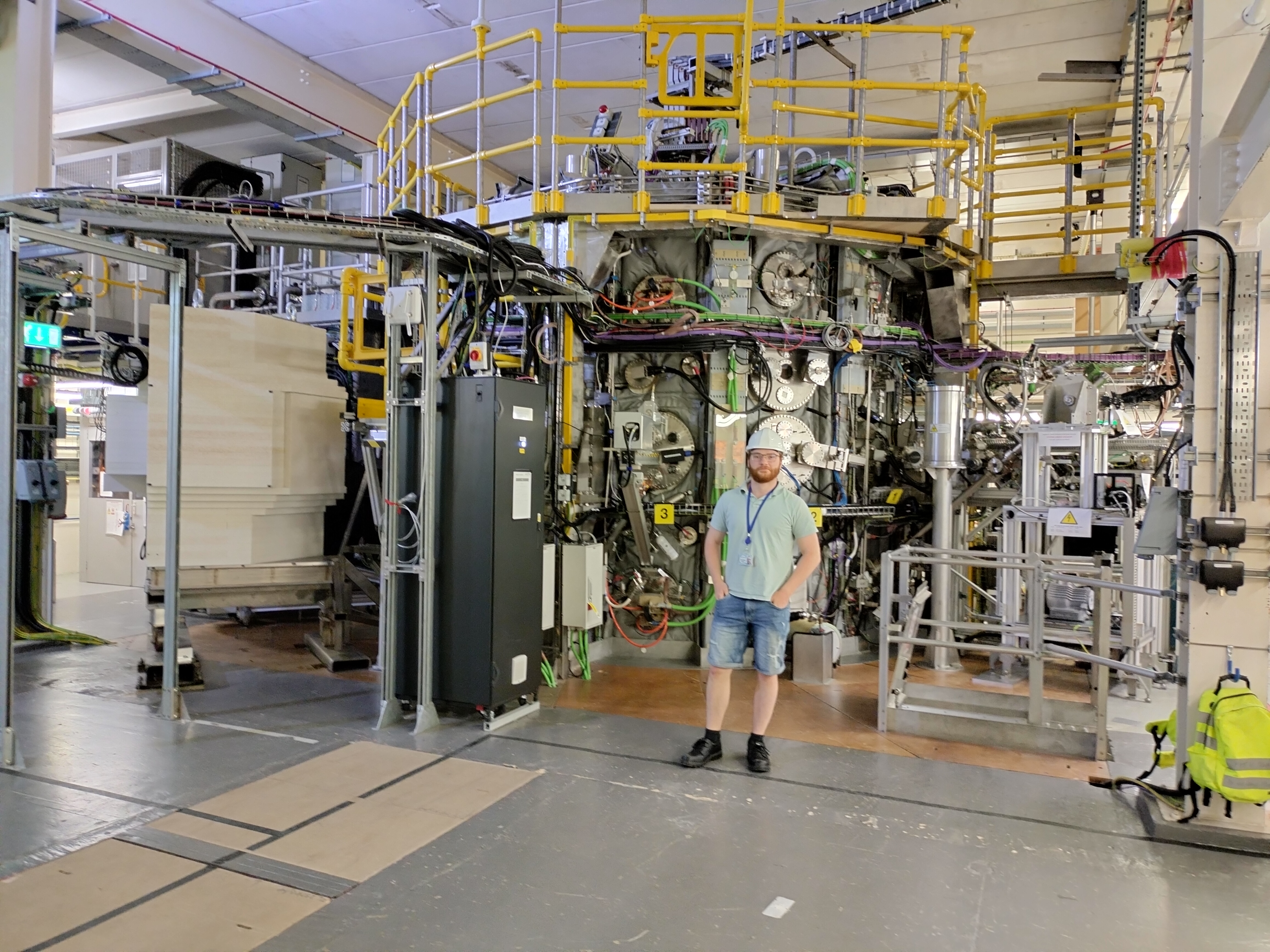I went to Culham, England to do my internship at the United Kingdom Atomic Energy Authority. The project was to use collisional radiative modelling to investigate molecular processes in divertor plasmas, in collaboration with the MAST Upgrade team.
Power exhaust is one of the main challenges for the realization of practical fusion energy production. The magnetic confinement approach to fusion often uses a divertor configuration, where power loads are critical. Recent SOLPS simulations of divertor plasmas in MAST-U and TCV show significant deviations from the experimental results. A possible explanation for this is the incorrect incorporation of plasma-molecular interactions in current SOLPS simulations. SOLPS uses tabulated rate data for the particle physics part of the simulations. There are, however, large concerns about the accuracy of these rates, especially for plasma-molecular interactions. Therefore, for my project, improved rate data from different sources, such as the Laporta and MCCCDB databases was used, to construct a Collisional Radiative Model (CRM) to investigate the plasma molecular interactions in conditions relevant to the MAST-U Super-X divertor. It was shown that using these rates, a better correspondence with experiment is achieved than with the tabulated rates. In particular, increased Molecular Activated Recombination (MAR) and Dissociation (MAD) was observed. Additionally it was found that molecular processes may be a significant contributor to divertor physics. The effect of different processes on the vibrational distribution was also investigated, as well as the radiative emission spectra generated from the CRM. It was demonstrated that re-evaluation of reaction rates for plasma-molecular interactions in plasma-edge modelling is necessary.

